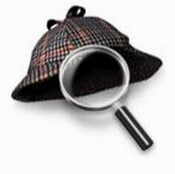Business
Believe it: Sherlock is really, really dead
For generations of Mac, Apple pushed its Sherlock application as the preferred interface for searching Web resources as well as local content. But with the release of Mac OS X Leopard, search is all about Spotlight, the integrated desktop search architecture, and Dashboard, the Mac's front end to Web services. No Sherlock allowed.


Sherlock itself does not work with Mac OS X 10.5 Leopard. Manually copying Sherlock from a version of Mac OS X prior to Leopard is not supported (and you should manually remove Sherlock).The history of Sherlock extends way back before Mac OS X. It arrived in the "classic" era, with Mac OS 8.5 in 1998. Sherlock provided some of the relevance technology offered by the company's AppleSearch server-based engine. I ran an AppleSearch server in my office for a couple of years at MacWEEK. Apple later added Internet searches within the Sherlock interface through plug-ins, I remember. Sherlock's history also had a share of scandal. Version 3 added support for dynamic Internet data services. This Sherlock update stirred up the developer community since it directly competed against a product released less than a year before by a small developer named Karelia. The tool was called Watson. (Karelia now makes the excellent Sandvox CSS-savvy Web tool.) It's all history now. Today, Spotlight and Dashboard rule. Some users must prefer the integrated search interface. Not me. I've always perceived differences between the content in the dynamic Web-based resources, static text content on Web sites and my local area junk. So I don't mind having different tools for the different content. And I don't want them all presented at once. In addition, Leopard's Web Clip tool in Safari 3 for making widgets out of Web pages is amazing. You select the part you want and it makes the widget. Of course, you can make very ugly widgets with this tool, which goes to show why Web Clip won't put professional Dashcode widgets out of business.